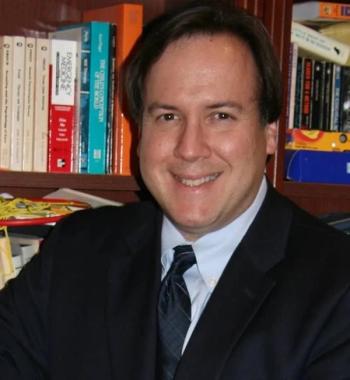
Challenges in Eulogizing Psychiatrist Colleagues
Psychiatrists who have died in 2017-even those who posed a challenge--deserve to be remembered.
IN MEMORIAM
No matter which psychiatrists are featured in these periodic eulogies, each presents a challenge. How do you do justice to the well-known and famous and not repeat what others have said?
For the less renowned, particularly the everyday clinician, how do you make their portraits come to life? What can you say that will offset a tragic ending? Then, as tried out for the first time in this series, how do you eulogize a colleague with whom you had a mixed relationship?
One way I have tried to cover all the psychiatrists in this column is to briefly include what their lives meant to me. Maybe that methodology will work for you, too, either with these psychiatrists or others.
THE GIANTS
[[{"type":"media","view_mode":"media_crop","fid":"64860","attributes":{"alt":"","class":"media-image media-image-right","height":"227","id":"media_crop_3971073344023","media_crop_h":"0","media_crop_image_style":"-1","media_crop_instance":"8303","media_crop_rotate":"0","media_crop_scale_h":"0","media_crop_scale_w":"0","media_crop_w":"0","media_crop_x":"0","media_crop_y":"0","style":"float: right;","title":" ","typeof":"foaf:Image","width":"150"}}]]Paul Ornstein, MD
Was it just coincidental that Dr. Ornstein died on January 19, 2017, the day before Donald Trump was sworn in as President of the United States? Perhaps. After all, he was 92 years old.
Regardless, he was an expert in self-psychology and narcissism, topics that have received much attention in our current political situation, including whether the Goldwater Rule should “trump” speculation about President Trump’s presumed personality disorder, as well as the current spate of sexual harassments. Wouldn’t it be interesting to hear Dr. Ornstein comment on these issues?
What you can readily find instead is Dr. Ornstein looking back on his life as a psychoanalyst.1 This work covers his surviving the Holocaust to his marriage and professional collaboration with his wife Anne in the US. After training as a psychiatrist in Hungary, he pursued studies in psychoanalysis, stimulated in part by curiosity about what motivated the anti-Semitism he experienced. I have the same curiosity and questions, including exploring the subject indirectly in editing an upcoming book on Islamophobia, as does my rabbi son who is working on a book on anti-Semitism.
Dr. Ornstein's insights into empathy may explain how he can even experience and convey empathy, not only to his patients, but to find the spark of humanity in German Nazis and to laugh at his own foibles.
Lucy Ozarin, MD, MPH
Dr. Ozarin was another of our psychiatrist giants who became prominent after World War II, when psychiatry was just beginning to flower in the US. She even surpassed Dr. Ornstein in her lifespan, dying at the age of 103 on September 17, 2017.
In medical school, she was one of six women in a class of 100. Like my own training, she spent time working in the Navy as a psychiatrist evaluating women toward the end of World War II.
Both of us were likely influenced by our time in the circumscribed military communities to be drawn to citizen communities of the underserved later in our careers. I ended up focusing my career in community psychiatry and must thank Dr. Ozarin for her role in getting this field off the ground when President Kennedy signed the Community Mental Health Act of 1963. She was one of the few people to write regulations for the centers that emerged around the country during the heydays of those centers.
After retiring, she continued to contribute to psychiatry for about 25 years, writing biographies of prominent psychiatrists for Wikipedia. I am now five years into retirement and hope to continue to contribute for at least another 20 years as she did! She continues to be a model for my career and that of many other community psychiatrists.
Here, too, we have the gift of a book for those who would like to delve further into her life as a pioneering and legendary woman psychiatrist. It is an oral history.2
Brian Benton, MD
[[{"type":"media","view_mode":"media_crop","fid":"64861","attributes":{"alt":"","class":"media-image media-image-right","height":"158","id":"media_crop_4286289227359","media_crop_h":"0","media_crop_image_style":"-1","media_crop_instance":"8304","media_crop_rotate":"0","media_crop_scale_h":"0","media_crop_scale_w":"0","media_crop_w":"0","media_crop_x":"0","media_crop_y":"0","style":"float: right;","title":" ","typeof":"foaf:Image","width":"137"}}]]While generally not as famous as Drs. Ornstein and Ozarin, Dr. Benton was especially renowned in the American Psychiatric Association (APA), where he was an important advocate for the Caucus of American Indians, Alaska Native, and Native Hawaiian Psychiatrists, as well as other APA endeavors related to the underserved minorities.
Given his Cherokee Indian ancestry, he knew how few psychiatrists there were with a Native American background, and how immense the psychiatric needs of Native Americans were. My career focus on cultural psychiatry concluded that despite the federally funded Indian Health Service, Native Americans might have the greatest psychiatric needs of any cultural group in the US. Elsewhere, after the term apartheid, I have called this “aparttime” for the historical and discriminatory separation of Native Americans onto federally determined reservations.
Although no book further explores Dr. Benton’s professional life, anyone interested in Native Americans can’t help but benefit from a book by Carl Hammerschlag, MD, about his fascinating work-and life lessons-with Native Americans.3
Robert Sadoff, MD
Near the end of my clinical career, I worked in the complex and challenging world of incarceration and forensic psychiatry. Dr. Sadoff was renowned for his expertise in assessing the mental competence and psychological state of mind of thousands of criminal defendants, including high profile cases.
As a founding leader of forensic psychiatry, he wrote many books about his fascinating work in the overlaps of law and psychiatry, including the distinctions between a clinical psychiatrist and a forensic psychiatrist. The book that especially caught my attention also related to my career concern with ethics.4 He discussed why forensic psychiatrists do not need to follow the Hippocratic mandate to “Do No Harm,” but rather search for the truth, for indeed the forensic psychiatrist at times can cause harm to the examinee.
Devoutly Jewish, he died at the age of 81 on April 20, 2017.
Salvador Minuchin, MD
Dr. Minuchin was another one of our eulogies who lived a long life. He died on October 30, 2017, at the age of 96.
I’ve been called a “gadfly” for some provocative perspectives. Similar labels were attached to Dr. Minuchin for his pioneering work on family psychotherapy with what became known as “structural family therapy.” He developed this after treating Holocaust orphans in Israel and delinquent boys in the US. To break dysfunctional patterns, he not only turned from seeing the identified patient to including the whole family, but he was very active in his comments and interventions.
Although family therapy has become more mainstream in mental health care, his perspective became more controversial over time. Perhaps that was because his activity, akin to being a writer and director of a family drama, isn’t easily duplicated or modeled.
To draw your own conclusions, Dr. Minuchin wrote many books, and his last one even has three supervision transcripts from his students.5 Regardless of how his ideas are valued over time, it surely moved the field of psychiatry along new paths of psychotherapy.
A CLINICIAN
Edmund Centana, MD
Dr. Centana was an everyday clinical psychiatrist, a representative of the backbone of our profession you rarely hear about. I did, because he practiced in Milwaukee, where I also practiced and knew of his solid work. He died on April 2, 2017, at the age of 70.
In his work with patients, he often used quotes from “Mother Teresa,” sometimes telling family members of severely ill psychiatric patients that they were like Mother Teresa in their devotion and caring.
I don’t know if he did this for safety reasons, but he had a fifth-degree black belt in taekwondo.
A TRAGIC ENDING
Achutha Reddy, MD
Would the black belt that Dr. Centena had saved the life of Dr. Reddy? Probably no one can answer this question, but Dr. Reddy was stabbed to death 165 times in an alley by one of his patients. The office manager tried to intervene, but ended up being unsuccessful.
[[{"type":"media","view_mode":"media_crop","fid":"64862","attributes":{"alt":"","class":"media-image media-image-right","height":"151","id":"media_crop_2942057076312","media_crop_h":"0","media_crop_image_style":"-1","media_crop_instance":"8305","media_crop_rotate":"0","media_crop_scale_h":"0","media_crop_scale_w":"0","media_crop_w":"0","media_crop_x":"0","media_crop_y":"0","style":"float: right;","title":" ","typeof":"foaf:Image","width":"135"}}]]He was 57 when he died on Wednesday night, September 13, 2017. His Holistic Psychiatric Services advertised that it served “the needs of your mind, spirit, and body.”
This shocking murder reminds all psychiatrists that, though rare, our lives can be in danger from our work and that we must do our best to protect ourselves. I surely felt the risk when I worked in a medium security prison. What I was told before I started to work there was not to wear a tie, not to shake hands with the male patients, and to sit between them and the door, with the telephone that could be knocked off and thereby alert security right next to me. I think I may have been in more danger in my public community clinic where some of these same prison patients went to after their discharge. We had no on-site security, supposedly for financial reasons.
Many of us have felt we were protected best by our therapeutic alliances with patients. Nowadays, that is much harder to establish with briefer and briefer visits. Nonetheless, at the very least, one should never be alone with patients at higher risk for violence and, in any setting, staff members need to know what to do to try to contain violence. A new organization in New York, the
CHALLENGING RELATIONSHIPS
Seth Silverman, MD
After grappling for months about whether I should write this individual’s eulogy, I went the way I thought Dr. Ornstein (of our first eulogy) might-to try to empathize with those we are in conflict with. In his landmark research on adult development, psychiatrist George Vaillant concluded that one of the practices that leads to deep satisfaction in later life is forgiving others, including those who have died.6
When I began having a difficult time with Seth, he was just embarking on his career and he publicly revealed his internal struggle with mental illness. He was a rare early example of a psychiatrist’s self-disclosure of mental illness. I had been his one of his main supervisors in his residency and in his work in my community mental health center.
Eventually, his functioning at work worsened, both at my clinic and another one, and he was let go from his faculty position. He vowed revenge (and got some). We parted ways and never met again. Regretfully, at least from my point of view, any chance to resolve our relationship ended when he died at the age of 63 on May 4, 2017, one day before my birthday.
However, I did try to follow his career from a distance and it appears that he did some good things later in his life. He became a forensic psychiatrist akin to Dr. Sadoff, and was asked to participate in many high-profile cases, including on death row. Clinically, he focused on PTSD, which it seems that both of us recognized as so common-and so commonly unrecognized-in those convicted of crimes.
I forgive him, and I hope he had forgiven me for anything I did wrong regarding him.
George Adams, MD
George was both Dr. Silverman’s and my boss. When our working relationships were relatively good, we even edited a book together, though one with a telltale title.7
George was an early leader in the development of community psychiatry and integrating psychiatry into medicine. However, Seth never seemed to trust him and that proved prescient for, unfortunately, the contract he developed between Baylor College of Medicine (BCM) and Harris County ended when he was convicted for his role in buying and selling our clinic buildings.
His whereabouts were unknown to me from 1989 until early this year when, in a visit to Houston, a colleague Googled him. The results showed that he had died the year prior, on New Year’s Day, 2016, at the age of 73. His obituary recommended that any contributions be made to Jewish Family Service. In Milwaukee, I had long done pro bono work at our Jewish Family Service, recognizing how valuable its services were, not only to Jewish patients, but anybody from the community who wanted and needed to receive services at low fees.
Psychiatrists who have died in 2017 deserve to be remembered. If you know of others and want to share their legacy with us, please do so in the comment section of this piece.
References:
1. Ornstein P, Epstein H. Looking Back: Memoir of a Psychoanalyst. Lexington, MA: Plunkett Lake Press; 2015.
2. Dickstein LJ. Lucy D. Ozarin, M.D. M.P.H.: A Life of Service to Psychiatry and the Nation. CreateSpace Independent Publishing Platform; 2016.
3. Hammerschlag C. The Dancing Healers: A Doctor’s Journey of Healing with Native Americans. Harper One; 1989.
4. Sadoff R. Ethical Issues in Forensic Psychiatry: Minimizing Harm. Wiley; 2011.
5. Minuchin S, Reiter M, Borda C. The Craft of Family Therapy: Challenging Certainties. Routledge; 2013.
6. Vaillant G. Aging Well: Surprising Guideposts to a Happier Life from the Landmark Harvard Study of Adult Development. Little, Brown and Company; 2003.
7. Moffic HS, Silverman S, Adams G (eds): Psychiatry: A Problem-Oriented Approach. Elservier Science Publishing Co., Inc.,; 1986.
Newsletter
Receive trusted psychiatric news, expert analysis, and clinical insights — subscribe today to support your practice and your patients.














